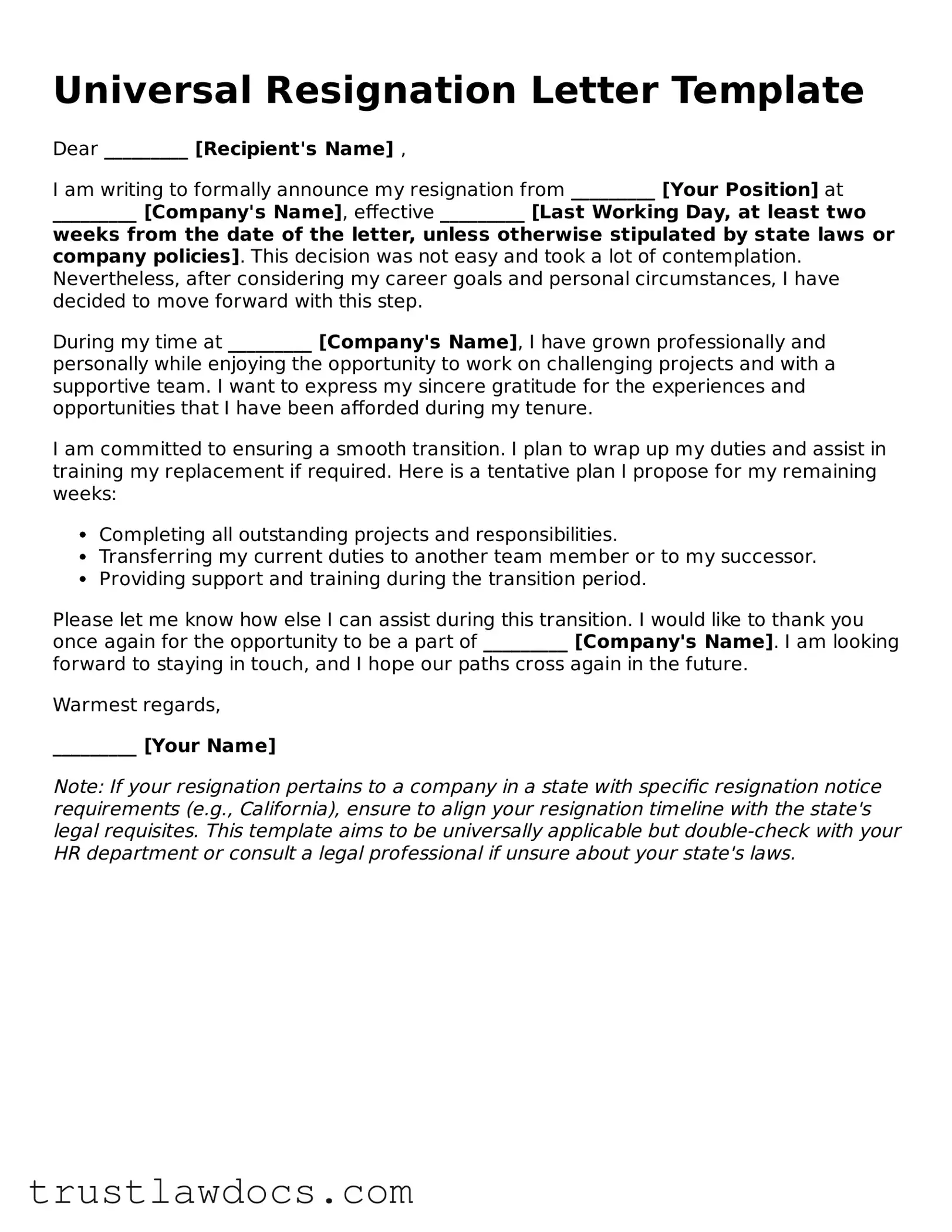Universal Resignation Letter Template
Dear _________ [Recipient's Name] ,
I am writing to formally announce my resignation from _________ [Your Position] at _________ [Company's Name], effective _________ [Last Working Day, at least two weeks from the date of the letter, unless otherwise stipulated by state laws or company policies]. This decision was not easy and took a lot of contemplation. Nevertheless, after considering my career goals and personal circumstances, I have decided to move forward with this step.
During my time at _________ [Company's Name], I have grown professionally and personally while enjoying the opportunity to work on challenging projects and with a supportive team. I want to express my sincere gratitude for the experiences and opportunities that I have been afforded during my tenure.
I am committed to ensuring a smooth transition. I plan to wrap up my duties and assist in training my replacement if required. Here is a tentative plan I propose for my remaining weeks:
- Completing all outstanding projects and responsibilities.
- Transferring my current duties to another team member or to my successor.
- Providing support and training during the transition period.
Please let me know how else I can assist during this transition. I would like to thank you once again for the opportunity to be a part of _________ [Company's Name]. I am looking forward to staying in touch, and I hope our paths cross again in the future.
Warmest regards,
_________ [Your Name]
Note: If your resignation pertains to a company in a state with specific resignation notice requirements (e.g., California), ensure to align your resignation timeline with the state's legal requisites. This template aims to be universally applicable but double-check with your HR department or consult a legal professional if unsure about your state's laws.
